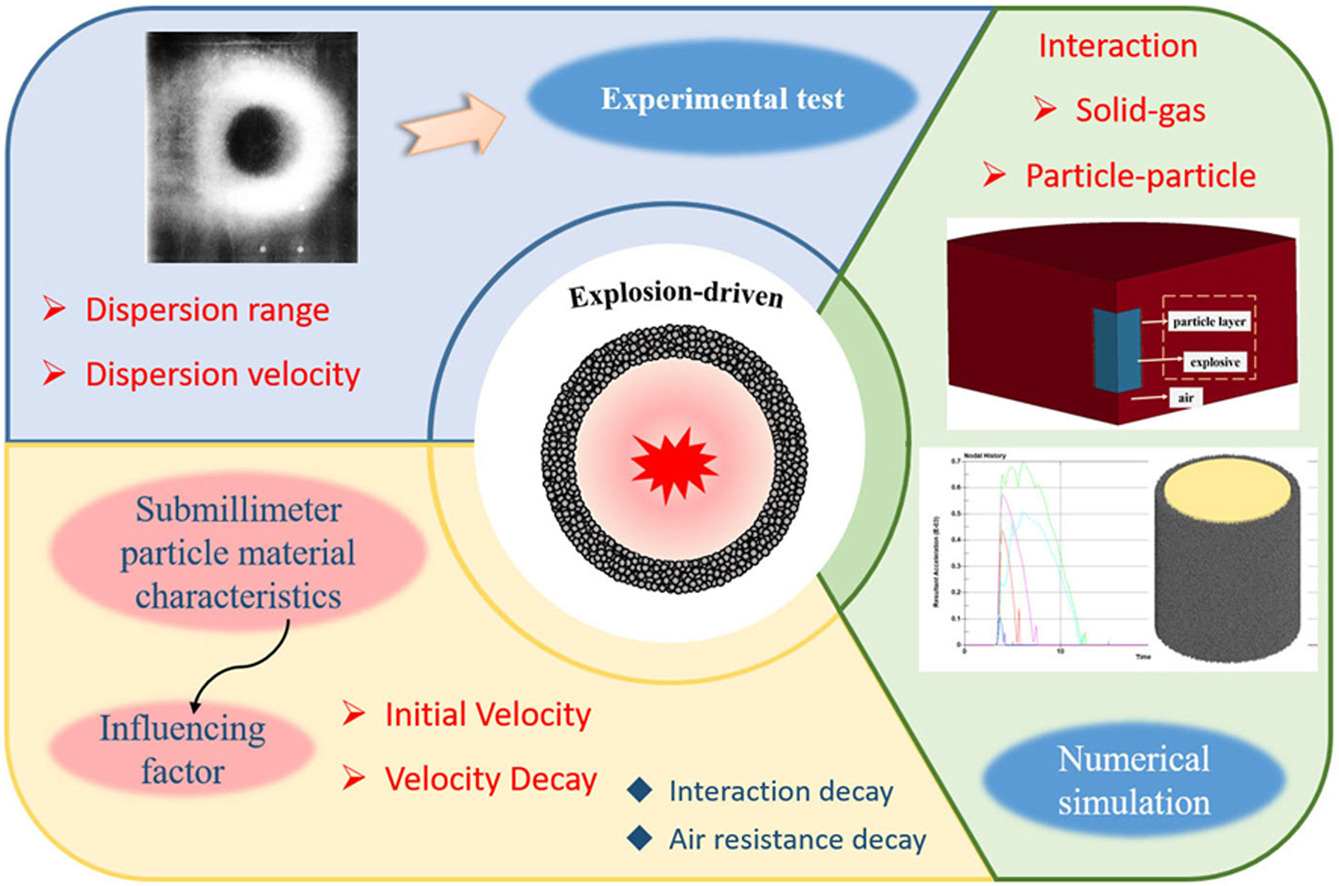•A capture test (flash X-ray photography) for submillimeter particle dispersion was carried out.
•DEM-FEM simulation method of explosive driven particle dispersion was verified.
•Effect of particle material characteristics on velocity attenuation was discussed.
•Global velocity evolution of submillimeter particle under explosive loading was obtained.
Low collateral damage munitions incorporate tens of thousands of submillimeter heavy metal particles in the shell, replacing the conventional metal shell. These munitions achieve near-field damage capabilities comparable to that of conventional munitions, while relying on the dispersion decay characteristics of the particles to control the range of damage. However, the submillimeter size of particles poses significant challenger in analyzing explosion-driven scattering. In this study, X-ray test was used to capture the scattering and dispersion state of the particle groups driven by blast load. The scattering evolution was simulated using the discrete element method (DEM) coupled with the finite element method (FEM). The extended velocity field distribution was analyzed in terms of the two-phase flow forces governing particle decay, to reveal the velocity evolution during particle group scattering and qualitatively analyze its influencing factors. Ensuring the strength of the layer structure, results indicate that lower particle content in the structural shell promotes easier expansion and rupture, enhancing the scattering ability of the particle group. The initial particle velocity is determined by the explosive energy and the mass ratio of the composite shell to the explosive (M/C). Near-field explosion dynamics involve complex interactions among shock waves, blast products, and particles groups in a multiphase medium. In contrast, far-field behavior reflects particle decay driven by air resistance, which is related to the resistance characteristic time. This study presents a method for calculating particle group velocity evolution, offering valuable insights for the engineering design and effect assessment of low collateral damage munitions.

